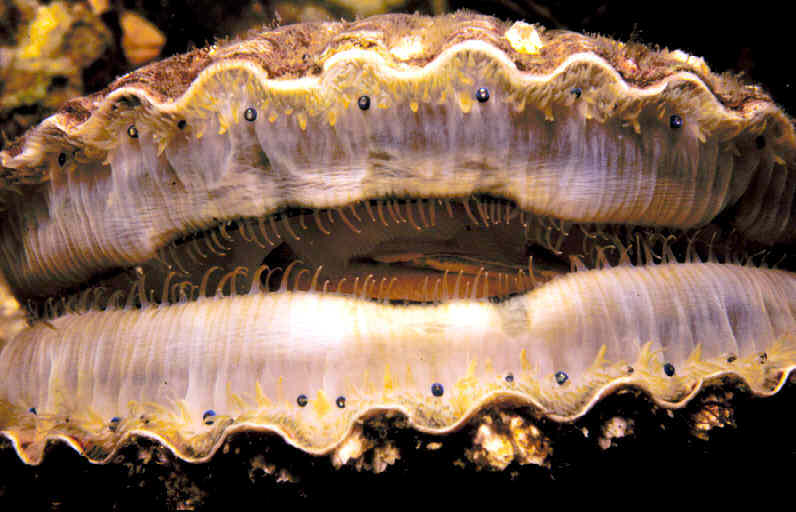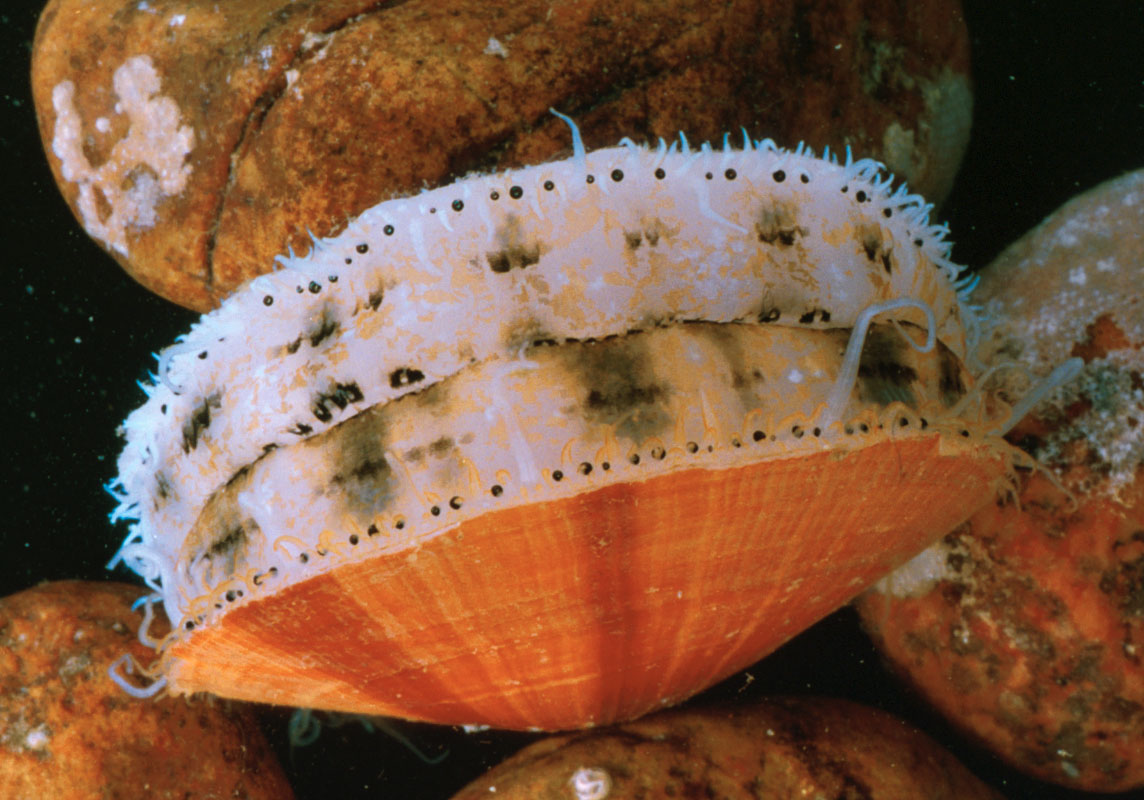Scallop and his amazing eyes

An ordinary scallop has up to 100 eyes. Their number varies even within the same species. Scallops can easily grow lost "organs of sight"
The eyes of higher animals are a very complex organ. He passed an extremely long way from simple photosensitive cells to that unique system of a huge number of elements, which the eye is today. The most interesting thing is that this organ is not only in humans or mammals. Complex eyes appeared more than once in the process of evolution, some of which were not at all soft, but mineralized formations.
Even jellyfish have eyes that are considered very simple organisms. More precisely, one of the species of jellyfish. There are eyes and mollusks . But now it’s not a cephalopod representatives of this type, but a simpler representative - scallop. If you look closely, then on the edge of the shell, when it is open, you can see a number of bright dots.
It turns out that these points need a comb not for beauty. They are the eyes that give the animal the opportunity to see everything that is happening around and in case of danger, quickly run away. The bivalve can also move quickly. By the way, the same jellyfish with eyes, which was discussed above, is quite able to move purposefully in one direction and very quickly.
')
Scallop eyes are not so simple. Each of them is a complete organ with its own lens and retina. The retina in the eye of the scallop is double-layered, plus there is a concave reflective surface. The lens of the eye, as in any other case, works as a lens that focuses the light. But there is one feature here - the fact is that these animals do not have a visual center. That is, as far as can be judged. Scallops do not see the world around them as other animals see it with eyes and a more or less complexly developed brain. The nervous system in bivalve scattered-node type. It is easier for them than for gastropods, so there’s no point in talking about the brain.
Simple eyes, located on the edge of the mantle, there are representatives of the groups Arcoidea, Limopsoidea, Mytiloidea, Anomioidea, Ostreoidea and Limoidea. But everything is quite simple here: such organs consist of a small depression, which is lined with light-sensitive cells and a light-refracting lens.
Nevertheless, scientists, after a series of studies, determined that scallops can distinguish dark places from light ones, which allows them to move from sandy “deserts” to places where there is greenery. Plus, these mollusks recognize movement. If the nervous system registers this movement, the scallop immediately runs away. This allows him to successfully hide from virtually any predator. Of course, there are nimble animals, but there's nothing you can do. But from the overwhelming majority of enemies, the comb can escape. If there is danger, the comb either floats away or remains in place, slamming the sash.

As mentioned above, the clam can swim. He does this by using a stream of water, which is formed during the abrupt closure of the shell. Scallops can swim back and forth, as well as perform fairly complex maneuvers. They are able to adjust the direction of their movement. If there is no danger nearby, then the scallops just peacefully sit on the bottom of the sea, filtering the water in order to obtain the microorganisms contained in it.
In addition to the ability to move quickly and the presence of dozens of eyes, the comb is not much different from the class of bivalves (or plate-like). These mollusks include oysters with mussels. Most of the representatives of the class have highly developed lamellar gills (ctenidia), performing not only the respiratory function, but also the role of filters for draining food particles from the water, therefore, the type of food is bivalve - mainly filter feeders.
For the first time these mollusks appeared about 500 million years ago. Now the total number of bivalve species is approximately 9,200. They belong to 1260 genera of 106 families.
In total, scallop has about six dozen bright blue eyes, which are located along the edge of the mantle of the animal. Eyes arranged in a row. In case of loss of any of the organs of vision, the scallop sprouts a new one without any problems. This is what distinguishes it from most of the more complexly organized animals. If limbs can regenerate even much more complex animals than a scallop, then this technique does not work with the eyes.
In addition to the eyes, other elements are located on the mantle of the mollusk. For example, outgrowths that look like teeth. In fact, these are soft processes that play the role of sensors. These processes, together with the eyes, constitute the "security system" of the mollusk. The slightest movement of water, and the sink slams. In addition, they also play the role of a filter, sifting sand particles or other materials from entering the shell.
Source: https://habr.com/ru/post/400845/
All Articles